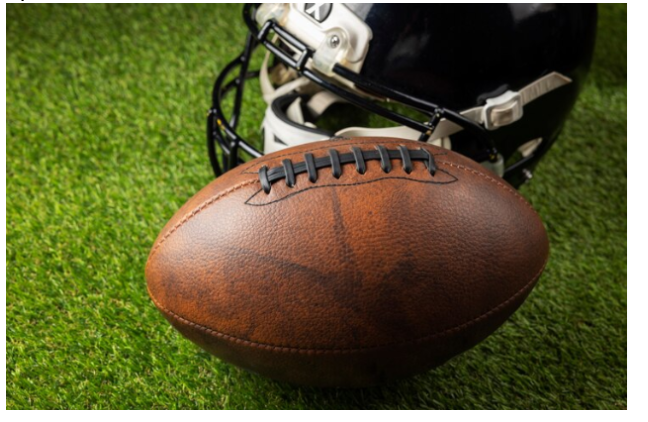How to Choose the Right Flashlight for Your EDC Kit
Your Everyday Carry, or EDC kit, is a survivalist’s collection of tools kept on hand, and used daily, in emergencies, and unexpectedly. A flashlight is an integral part of any balanced EDC kit, as it provides effective lighting in the absence of daylight. However, with so many different models of flashlights out there, it can be quite a hassle to choose the right one for your EDC kit. This guide will detail some of the main considerations for choosing the best flashlight for the task and ensure that you have a reliable tool at your disposal in all situations.
Why a Flashlight is Essential for Your EDC Kit
A flashlight is one of the things that can easily be forgotten in an EDC kit, but when totally dire situations come about, such as exploring darkened spaces, finding misplaced items, or signaling distress, it proves to be very useful. A flashlight can help save your life in such emergencies as power cuts or at night roadside assistance. A good flashlight for EDC purposes should be compact, durable, and of sufficient strength to render the work in both daily practice and during those unexpected times.
Compare this to the flashlight on your phone, and you find an EDC flashlight that presents much brighter illumination, better battery life, and improved durability. Also, EDC flashlights are optimized for rough handling and extreme conditions such that when you really need them, they’ll be there for you. Whether you’re a hiker, commuter, or just someone who likes to be prepared, having the right flashlight in your EDC kit is essential.
Major Things to Think About Before Picking an EDC Flashlight
Before you decide which flashlight works best in your everyday carry kit, there are a few things you’ll have to consider. Using size, brightness, durability, the type of battery it uses, and other features, the options could be narrowed down through these criteria to find the best EDC flashlight for you.
Size and Portability
This can also be through size. EDC kits focus on the bare minimum items to be carried, hence offering room for nothing but your minimum; your flashlight cannot be large or bulky. A smaller flashlight will enable you to stash it just in the pocket, carry it by the end of your keychain, and attach it to your bag, without weighing you down anymore or taking up as much space.
Many EDC flashlights, though small, have amazing lumen output. Sub-4-inch flashlights are great for a pocket carry, providing plenty of light. Look for models that feature slim, ergonomic bodies for a secure, one-handed hold of the flashlight. Keychain flashlights are the most portable possible but often forfeit some lumens in the interest of size if you want a flashlight that’s always attached to your body.
Brightness and Lumens
Bright is such a vague term when choosing an EDC flashlight, but brightness can be measured by how many lumens it puts out. In other words, a higher lumen rating means a brighter light. You want a flashlight that is both bright enough for near-field illumination and bright enough to provide distant illumination for emergencies.
For most everyday uses, such as reading maps, locating things in dimly lit spaces, or walking at night, 100 to 300 lumens in a flashlight should be sufficient. However, if you think you will need a more demanding environment for your flashlight, it should be at least 500 lumens and up. Most EDC flashlights also have adjustable brightness, which allows you to reduce your lumen output when maximum brightness is not necessary and helps to preserve even more battery life.
Durability and Build Quality
Since it is going to be carried around day in and day out, for possible rough use, a flashlight’s durability has to be very high. Its materials should be high-quality material such as aircraft-grade aluminum which is light yet strong. Most EDCs are also anodized to prevent scratching corrosion and wear over time.
Yet another feature you should check on the flashlight is water and impact resistance if you intend to spend some considerable time outdoors or in more unpredictable environments. For example, an IPX4-rated flashlight might withstand splashing but an IPX7 or IPX8 withstand submersion at short intervals. Drop resistance is also essential for letting your flashlight survive an accidental fall or knock without impairing its functionality.
Battery Type and Runtime
The type of battery your EDC flashlight is going to make use of determines its level of convenience and runtime. The two major types of flashlight batteries are rechargeable or disposable.
Rechargeable flashlights are eco-friendly and enable you to recharge via USB or magnetic charging. They best suit those who continue using their flashlight on a regular basis, so they won’t have to be bothered about regularly replacing batteries. In addition, rechargeable batteries produce longer runs compared to disposables and are often more robust.
On the other hand, flashlights which use disposable batteries, such as AAA or AA are ideal for those who want an entirely low-maintenance flashlight. This is useful since the user can just replace the battery when it runs out; very helpful in emergencies when there isn’t enough time to wait for charging. Next, ensure that your flashlight has a reasonable runtime based on what is required for the intended usage, and where available, one that ensures several hours of constant use based on a single charge or set of batteries.
Beam Distance and Focus
The distance that the beam of a flashlight reaches refers to how far the light will travel; this is a critical function in outdoor activities where long-range visibility would be warranted. It is not uncommon for a good number of flashlights used in EDC to offer both a floodlight setting for illuminating large areas and a spotlight setting to focus on specific targets at a distance.
Adjustable focus flashlights can supply you with a broad, even beam for nearby work and a narrow, intense beam for seeing further distances. Such flexibility can significantly be useful in the same exact situations where you would want to adjust the light to fit into your environment, such as changing from standing in a dark alley to walking on an open field. Traditionally, a beam distance of more than 50 meters is attainable by EDC flashlights. However, some models can range up to more than 100 meters in distance.
Ease of Use and User Interface
Since an EDC flashlight is supposed to be used frequently, the user interface should be extremely simple and intuitive. Seek models with easily manipulated buttons or switches that allow you to make quick adjustments in brightness levels or switch between modes simply. Tail switches are very popular today, found on most tactical and EDC flashlights and thus make it an important characteristic to have for one-handed operation.
In addition, there are some flashlights equipped with a more advanced option, for instance, strobe mode or SOS signals. They could be useful for some users in certain situations, but not everyone would be in dire need of such an option. For others, an extra function like this can open an additional interesting role.
Additional Features and Accessories
Additional characteristics of a flashlight might be offered by many of the EDC flashlights that make them more convenient than any other one. Many of them come with magnetic bases, which help you stick them on any metal surface and free both your hands up to use for other things. Some of them have a belt clip, lanyard, or holster, which is ready to offer easy carry options for your flashlight.
Some other convenient features of an EDC flashlight to look for include lockout modes to prevent accidental activation, momentary-on switches for brief bursts of light, and tail stands that use your flashlight as a makeshift lantern. These add some nice functionality that can make your flashlight even more adaptable in situations.
Top Recommendations for EDC Flashlights
Indeed, even with so many EDC flashlights these days, here are some of the top models that will allow you to have the best size, brightness, durability, and battery life.
The compact re-chargeable flashlight Olight S1R Baton II offers as much as 1000 lumens; it can be charged by placing the device directly on a magnetic pad. That makes it perfect for EDC. This flashlight has the smallest of sizes, and is light in weight, but made from aluminum that can endure all the daily wear and tear.
This ultra-compact light, the Streamlight MicroStream USB, gives 250 lumens and USB recharging in a pocket-sized form factor. The simple design and good reliability make it a favorite among those in EDC.
The AA-powered Fenix E12 V2.0 is ideal for those who like using disposable kind of batteries. Given that it makes 160 lumens and has a very sturdy build, this is a versatile and inexpensive option for everyday carry.
Conclusion
Choosing the perfect flashlight to place in your EDC kit really is a matter of finding the right balance between size, brightness, and durability with convenience. From a high-lumen powerhouse built more for extreme applications to a compact, easily carried flashlight suited for everything from everyday carry to a more pressing need, possibilities never seem to run out. Even after further narrowing down your search by pertinent features like portability, battery type, and build quality, you’re sure to find a flashlight that is perfect for any given moment. Investing in a good EDC flashlight means no matter what life throws your way, you’re prepared.



